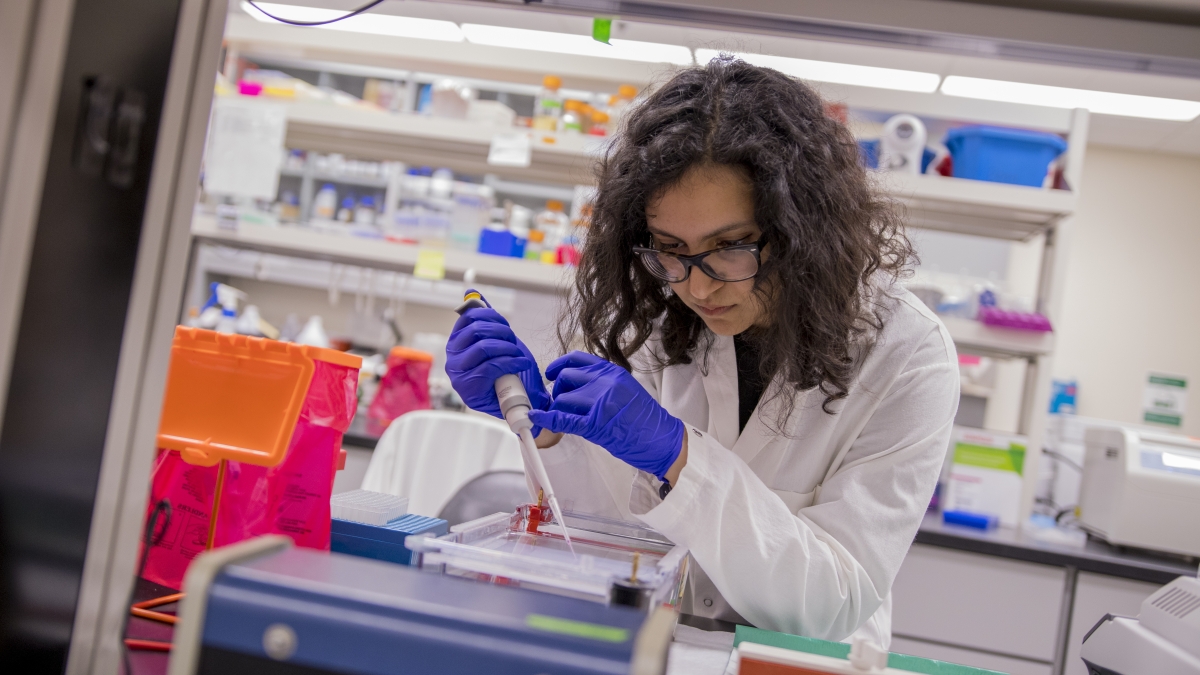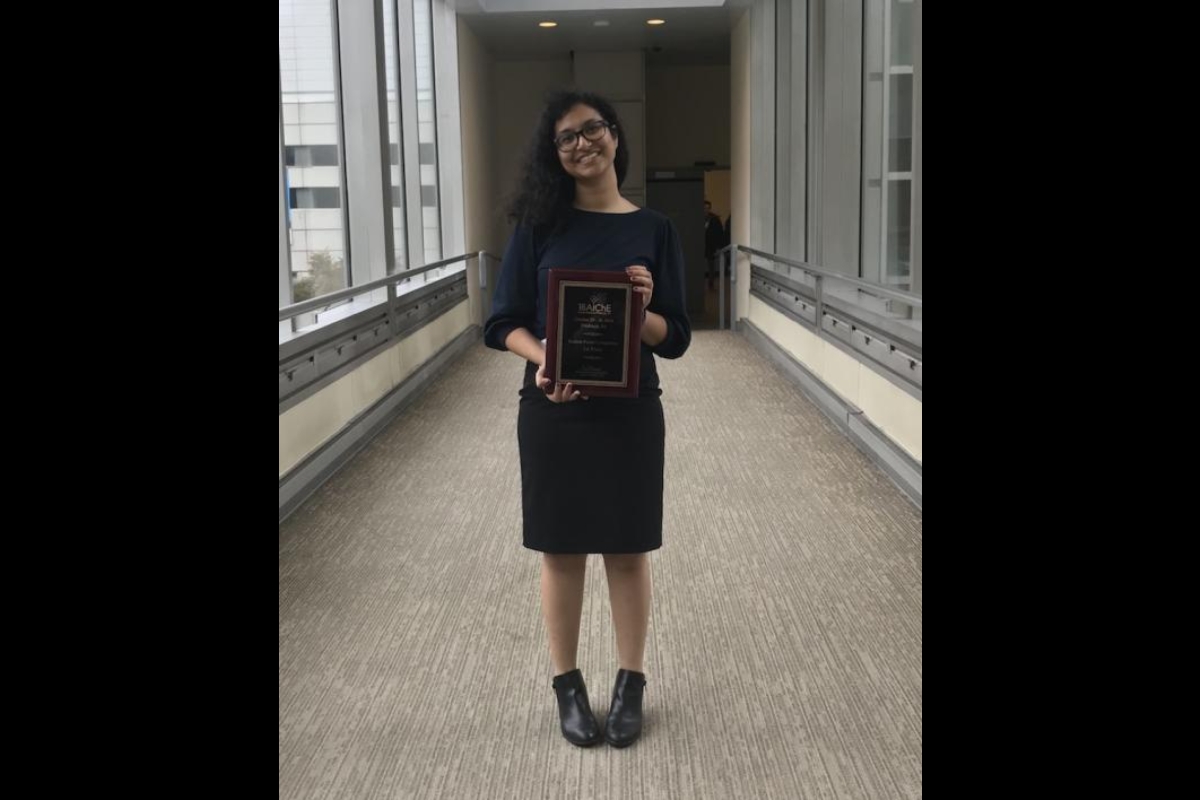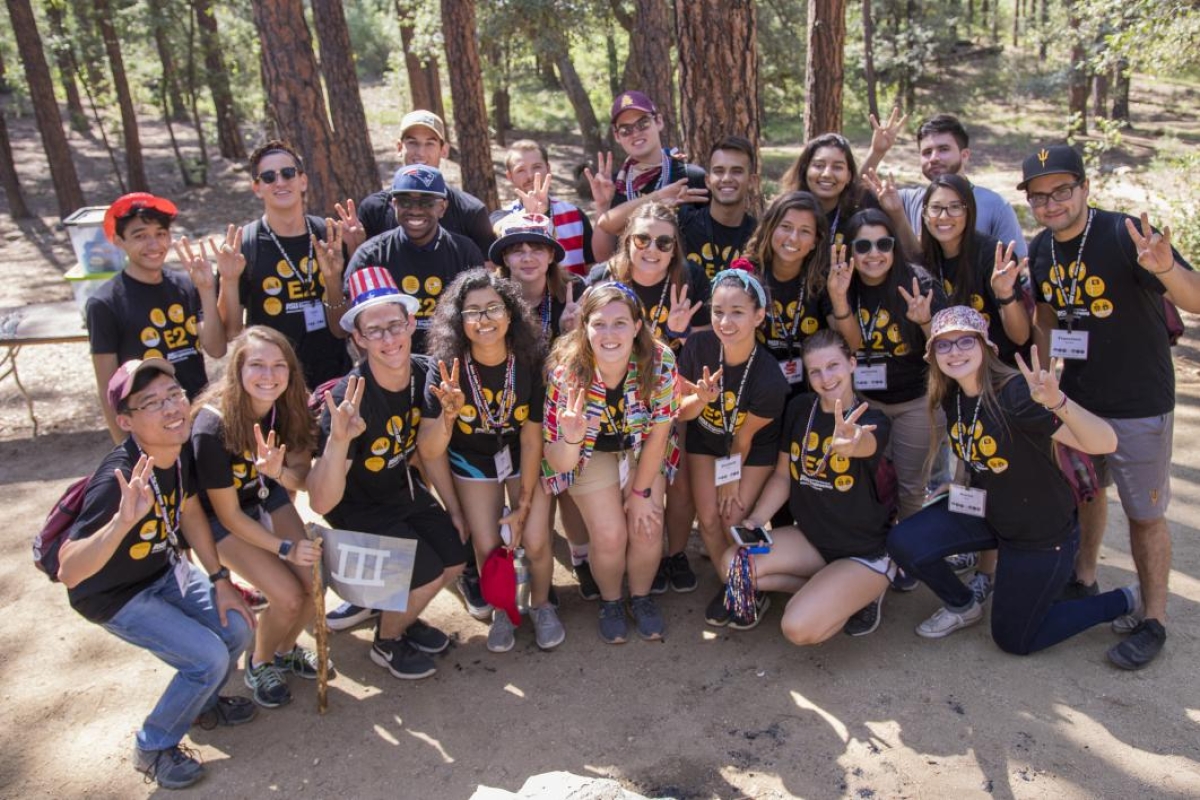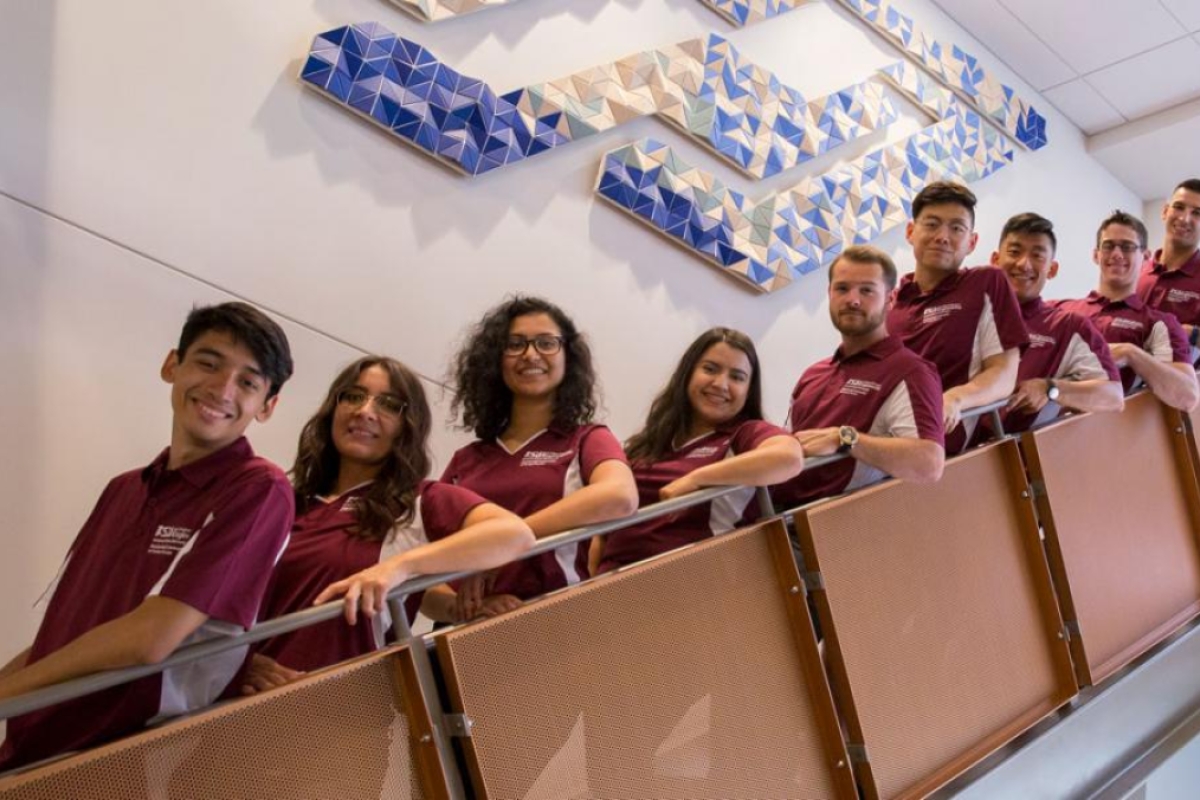Multidisciplinary student researcher aspires to solve health challenges

Junior Ava Karanjia conducts research to help detect changes in lung bacteria to further the development of better treatments. Karanjia, who is double majoring in chemical engineering in Arizona State University’s Ira A. Fulton Schools of Engineering and molecular biosciences and biotechnology in ASU’s School of Life Sciences, takes advantage of a multidisciplinary approach to her research and has been recognized with two first-place student poster competition awards. Photo by Marco-Alexis Chaira/ASU
Ava Karanjia was 8 years old when she was diagnosed with an unknown illness and spent countless hours in doctors’ offices being handed from one specialist to another.
Though the disease directly affected her, Karanjia also saw the indirect effect it had on her family. As she grew older, she came to understand how illness can affect entire communities.
Karanjia’s experience inspired her to pursue a career where she could help communities overcome health challenges by tackling them at the molecular level.
“In the future, I want to help others overcome their own struggles,” said Karanjia, now a junior double-majoring in chemical engineering in Arizona State University’s Ira A. Fulton Schools of Engineering and molecular biosciences and biotechnology in ASU’s School of Life Sciences.
Starting a journey to a career in health
A high school biotechnology course piqued Karanjia’s interest in precision medicine — using a patient’s genetic background to diagnose or treat an illness. This interest led her to seek out schools that would let her hit the ground running on conducting health-related research.
ASU checked the box as the best place to start.
“Other schools said research was for upper-division students, and I wanted to get involved as soon as I started college,” Karanjia said.
After she was accepted at ASU, Karanjia was invited to join ASU’s Grand Challenge Scholars Program — a National Academy of Engineering-accredited program that helps prepare students to be collaborative, cross-disciplinary problem solvers. Grand Challenge Scholars Program students pursue entrepreneurial, global and service learning opportunities to find solutions to 14 grand challenges society faces in the 21st century, including engineering better medicines.
Amy Trowbridge, a senior lecturer and director of the Grand Challenge Scholars Program at ASU, believes having a double major is a unique way Karanjia has embraced the program’s principles.
“Ava embodies the characteristics of a Grand Challenge Scholar in that she is gaining and applying knowledge from two different disciplines to solve multidisciplinary challenges related to health,” Trowbridge said.
Karanjia believes double-majoring has helped her see how her chemical engineering courses apply to biology, particularly disease-causing microbes.
“Engineering provides you with problem-solving abilities and the engineering mindset that helps you go through things very methodically,” Karanjia explained. “Life sciences provide me with the intensive background in molecular biology and microbiology that I wouldn’t get from chemical engineering.”
By taking this multidisciplinary approach, Karanjia realized she can have a big impact in a career in drug development from discovery to synthesis.
Finding a multidisciplinary research niche
Karanjia quickly learned the fundamentals of working in a lab during her first semester with chemical engineering Assistant Professor Heather Emady’s research team, pursuing advances in drug manufacturing.
But soon she found her true research passion under the wing of Heather Bean, a professor in ASU’s School of Life Sciences.
“In Dr. Bean’s group, I’m acquiring all these new skills and really pushing myself toward something new,” Karanjia said.
Bean supports Karanjia’s multidisciplinary interest in biological sciences and engineering, which has led to a rich mentor-student relationship through which Karanjia is thriving.
Karanjia quickly got to work in Bean’s research group that explores the development of breath-based diagnostics to monitor and track chronic bacterial lung infections.
Helping communities overcome their health challenges
The results of Karanjia’s research with Bean can help patients with cystic fibrosis and even astronauts who are at risk for lung infections. Consequently, the ASU NASA Space Grant Program has supported their research.
Through their research efforts, Karanjia and the Bean group are well on their way to their goal of helping the cystic fibrosis community to overcome health challenges.
“Knowing in the end that what you’re doing can affect someone’s life, their family’s lives and all layers of the communities around them makes everything worth it.”
Using bacterial communication as a tool for treatment
A burst of activity in a person’s lungs signals a battle is coming. A legion of Pseudomonas aeruginosa bacteria has taken hold and amassed enough forces to attack. They’ve adapted to the mucous-filled environment and developed the right tactics to communicate with each other; they’re ready to charge.
Karanjia, Bean and the rest of the research team in Bean’s lab are preparing a strategy to sense the oncoming attack. Karanjia studies the bacteria’s phenotypes — observable characteristics resulting from the interaction of an organism’s genetics with its environment. The specific phenotypes she observes are controlled by quorum sensing, or the chemical signals the bacteria use to communicate. P. aeruginosa and its quorum-controlled phenotypes undergo changes as it adapts to its environment in a lung infection.
Investigating how these phenotypes change over the course of a chronic infection, and developing ways to detect the changes, can lead to better treatments.
Karanjia’s primary goal was to measure the amounts of secreted virulence factors, the bacteria’s attack arsenal, in early and late stages of infection, and to identify the underlying genetic changes. She plans to continue this research to better understand how these chronic infection adaptation affect the populations of P. aeruginosa that reside in cystic fibrosis lungs. The work will help researchers better understand how infections progress and, in turn, will better inform treatment options.
Earning recognition for her multidisciplinary research
In two consecutive weekends of her junior year, Karanjia presented her multidisciplinary research in the poster presentation competitions at the Society of Women Engineers WE 2018 Conference and the American Institute of Chemical Engineers Annual Student Conference.
Karanjia won first-place prizes in both competitions, outperforming 20 research finalists at the Society of Women Engineers conference and more than 300 undergraduate chemical engineering students at the American Institute of Chemical Engineers conference.
“With the caliber of students there and the amazing research presented from so many different excelling universities, I think I did pretty OK!” Karanjia said.
Knowing her focus on life sciences would be a little different from the engineering research her peers were presenting, Karanjia used a storytelling approach to explain the microbiological concepts behind it.
“Telling your research as a clear story is the key to a good research presentation,” Karanjia said. “I learned that from Dr. Bean. You need to provide context because others don’t have a background in what you do.”
By telling the story of why her engineering and life sciences multidisciplinary research matters, Karanjia impressed the judges.
Earning both the Society of Women Engineers and American Institute of Chemical Engineers first-place awards is a special accomplishment.
“The fact that she has won two awards for her research posters at two different conferences in the same year is a tremendous accomplishment that definitely makes Ava unique, and we are proud that she is part of GCSPGrand Challenge Scholars Program,” Trowbridge said.
A leader in research and mentoring
Along with being an accomplished researcher, Karanjia takes many opportunities to help her peers be successful — just as her mentors have done for her.
“I personally had really great mentors who helped me narrow down on my passion and research topics, so I wanted to be that resource for other people,” Karanjia said.
In her three years as a Fulton Schools student, Karanjia has participated in multiple mentoring programs of students at different levels of education.
She particularly enjoys helping girls discover they, too, can be scientists and engineers.
Karanjia has led K–12 outreach efforts with Fulton Ambassadors, a group that shows prospective students around the Fulton Schools and gives classroom presentations.
“When I was little, I didn’t have any role models who looked like me,” Karanjia said. “Role models who look like us are super important in getting minorities in STEM.”
She also helps her peers learn about and take advantage of the opportunities that helped her become the accomplished student she is today. Karanjia often shares her experiences — both successful and unsuccessful — to encourage students to pursue opportunities outside their comfort zones.
“Your undergrad education is meant for you to collect experiences, different perspectives and viewpoints of the world around you,” Karanjia said.
Karanjia welcomes first-year Fulton Schools students each summer at the E2 welcome event as a camp counselor.
At the Tooker House residence hall, Karanjia serves as a peer mentor helping connect students with faculty members who share their interests so they can also take advantage of research opportunities.
“Helping others to realize their passions and successes is something that has made my undergrad experience more valuable,” Karanjia said.
More Science and technology

ASU postdoctoral researcher leads initiative to support graduate student mental health
Olivia Davis had firsthand experience with anxiety and OCD before she entered grad school. Then, during the pandemic and as a…

ASU graduate student researching interplay between family dynamics, ADHD
The symptoms of attention deficit hyperactivity disorder (ADHD) — which include daydreaming, making careless mistakes or taking…

Will this antibiotic work? ASU scientists develop rapid bacterial tests
Bacteria multiply at an astonishing rate, sometimes doubling in number in under four minutes. Imagine a doctor faced with a…



